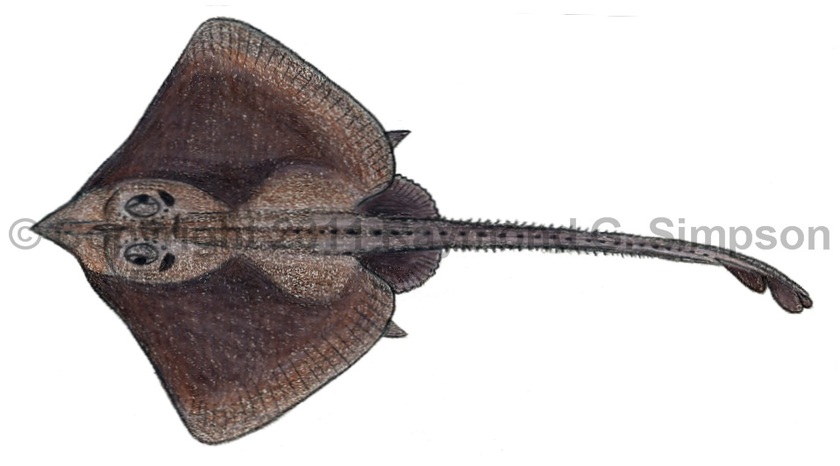
Common Name
Rough Legskate
Year Described
Bigelow & Schroeder, 1958
Identification
Disk rhomboidal with a slightly concave anterior margin of snout and pectoral fin. Snout moderate (10-14% TL) with stiff rostral cartilage. Pectoral fins with blunt tips. Anterior pelvic fin lobe separated from posterior lobe and greatly elongated; about as long as the squared-off posterior lobe. Tail is long and thin. Posterior part of tail with skin folds that broaden toward tip. There are two dorsal fins placed far back on tail with distance between them half the width of the first dorsal fin. Caudal fin is barely evident and tapers to a round tip. Eyes and mouth large. Jaws with 34-46 tooth rows. Male claspers thin and long.
Body is covered with dermal denticles dorsally. The rostrum has 1-9 thorns. There are 3-8 orbital thorns, and 2 nuchal thorns on the head. No scapular thorns. Posterior abdomen and tail with a single median row of 47 thorns (gap on anterior abdomen). Random lateral thorns on tail but not in parallel rows. There are 1-3 thorns present between the dorsal fins. Ventral surface without dermal denticles except for under tail.
Color
Dorsum uniformly medium to dark brown with no markings. Fins slightly darker. Ventrum whitish with mottling varying from sparse to heavy.
Size
Maximum size to 50cm TL.
Habitat
A fairly deepwater species taken on soft bottoms (250-1000m).
Range
Widespread in tropical waters from Florida to Venezuela, including the Gulf of Mexico and the Caribbean Sea.
References
Last, P.R., White, W.T., Carvalho, M.R. de, Séret, B., Stehmann, M.F.W & Naylor, G.J.P (Eds.). 2016. Rays of the World. CSIRO Publishing, Melbourne.
Other Notes
Differs from the related Cruriraja cadenati in lacking parallel bands of thorns on the back and tail, having fewer nuchal thorns, and lacking scapular thorns.